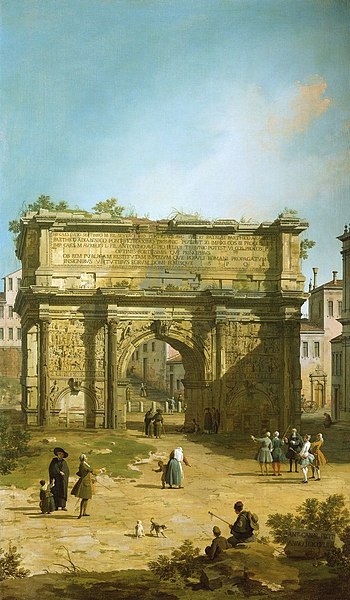A bollard is a sturdy, short, vertical post. The term originally referred to a post on a ship or quay used principally for mooring boats. It now also refers to posts installed to control road traffic and posts designed to prevent automotive vehicles from colliding or crashing into pedestrians and structures.
Mooring bollards, such as this one in the Hudson River, were the first type of bollard. The use of the term has since expanded.
East India House, Leadenhall Street, London: an engraving of 1766. Six bollards stand in front of the building.
The Arch of Septimius Severus in Rome, painted by Canaletto in 1742. Five bollards stand beyond the arch, apparently placed to protect it from vehicle damage.
Merwede-Canal, Utrecht, Netherlands features bollards made from cannons.
A wharf, quay, staith, or staithe is a structure on the shore of a harbour or on the bank of a river or canal where ships may dock to load and unload cargo or passengers. Such a structure includes one or more berths, and may also include piers, warehouses, or other facilities necessary for handling the ships. Wharves are often considered to be a series of docks at which boats are stationed. A marginal wharf is connected to the shore along its full length.
The Barbours Cut Terminal of the Port of Houston, US. This cargo shipping terminal has a single large wharf with multiple berths.
Wharf under construction on the Upper Mississippi in Fountain City, Wisconsin
Quay in Dublin, Ireland. The Irish language term cé is a borrowing from Anglo-Norman kay, cail.
Stereoscopic view of Long Wharf in Boston, United States, c. 19th century, jutting into Boston Harbor








